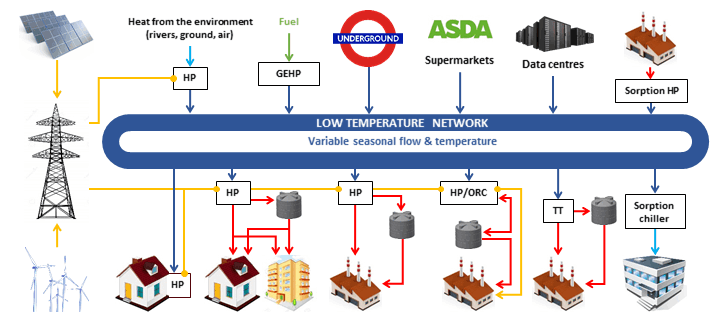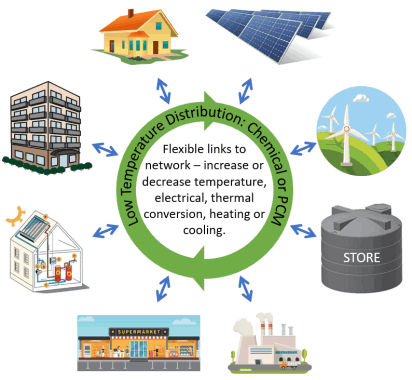



Also, since electricity input is needed for the heat pump, optimal utilisation of these heat resources can be achieved by the integration of heat and electricity networks. This can be facilitated by the use of thermal storage, as it can reduce peak loads on the electricity grid as well as enhance the efficiency of the distribution network. In addition, waste heat source availability often varies with time,so smart controls may be needed for efficient use of these energy systems. LoT-NET investigated the integration of these technologies into smart thermal networks to demonstrate the steps required for the decarbonisation of space heating in the UK.